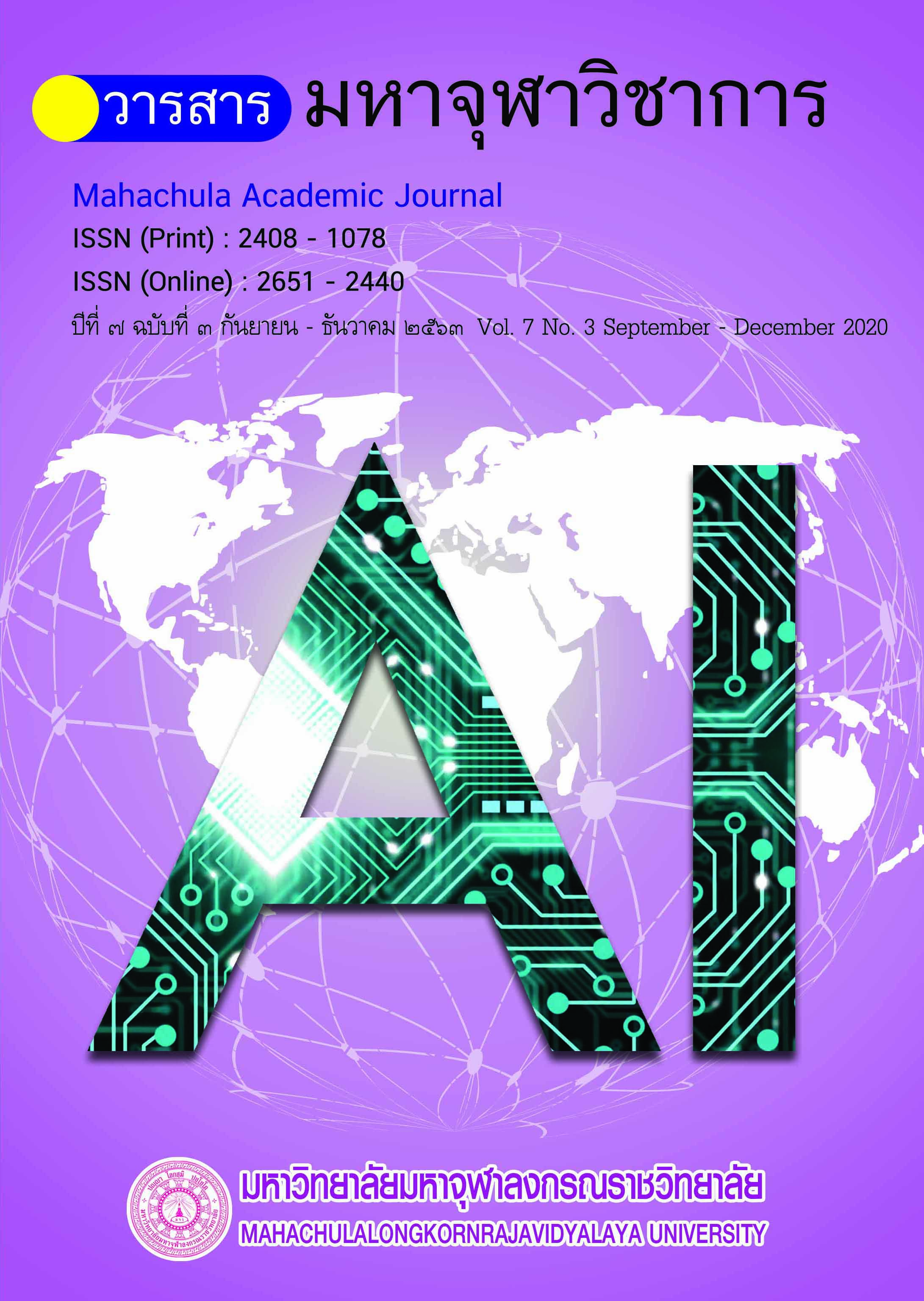Buddhism and Astrology : Adherence and Territory of Thai People in the Age of 4.0
Main Article Content
Abstract
This article aims to analytically study in adherence between Buddhism and Astrology. The objectives of these study are (1) Studying the form of adherence and the way that Thai people in the age of 4.0 follow the principle of Dhamma (2) Studying the form of adherence and the way that Thai people in the age of4.0 follow the principle of Astrology and (3) Studying the way of adherence which Thai people in the age of 4.0 follow both principle of Dhamma and Astrology.
This research is conducted with the “Documentary Research” reference by Buddhist scripture “Tipitaka” and the Astrology’s principles.The form of study are "Intergration” or “Interdisciplinary” and Indepth-interview structure with the key informant. From the study, in the objective1 . can be found that, mostly of Thai people in the age of 4.0 had believed in making a merit, believed in Kusala and Akusala by the basic of Thai culture and tradition. In the objective2 . found that lay people had chosen the way of Astrology when they got the problems, by checking their horoscope with the fortune-teller or making another ritual which belief that they can pass through all difficult things and bad luck. For the objective 3. can be found that, when lay people has strong in Buddhism principle and correct understanding of the machanism of Astrology, living on the way of Buddhist style, that consist of giving or generosity, observing the percepts or moral behaviour and mental development it will supporting mental health. In adherence, both Astrologer and monks can combine the knowledge and give some advice to the people which make them feels less anxious and worried, get more confident and encouragement to pass throught the obstrucles which be an adherance between Buddhism and Astrology from the past untill now.
Article Details
References
พระธรรมปิฎก (ป. อ. ปยุตโต). เชื่อกรรม รู้กรรม แก้กรรม. กรุงเทพมหานคร: พิมพ์สวย, ๒๕๔๕.
พระพรหมคุณาภรณ์ (ป. อ. ปยุตฺโต). พุทธธรรม ฉบับปรับขยาย. พิมพ์ครั้งที่ ๓๓. กรุงเทพมหานคร: สำนักพิมพ์เพ็ทแอนด์-โฮม จำกัด, ๒๕๕๕.
พระมหายงยุทธ ธีรธมฺโม (พลมั่น). "ศึกษาวิเคราะห์รูปแบบการประยุกต์ใช้แนวคิดเรื่องดาราศาสตร์เพื่อพัฒนาคุณภาพชีวิตตามหลักพระพุทธศาสนา". ดุษฎีนิพนธ์พุทธศาสตรดุษฎีบัณฑิต พระพุทธศาสนา. บัณฑิตวิทยาลัย: มหาวิทยาลัยมหาจุฬาลงกรณราชวิทยาลัย, ๒๕๕๖.
พระมหาหรรษา นิธิบุณยากร, รศ.ดร.. พระพุทธศาสนากับวิทยาศาสตร์สมัยใหม่. พิมพ์ครั้งที่ ๓. กรุงเทพมหานคร: โรงพิมพ์รพีปกรณ์, ๒๕๕๗.
พระยาบริรักษ์เวชการ. หลักโหราศาสตร์ทั่วไป มูลฐานของโหราศาสตร์และประโยชน์ของการศึกษาโหราศาสตร์ มรดกแห่งโหรสยาม สมาคมโหรแห่งประเทศไทย. กรุงเทพมหานคร: มิตรสยามการพิมพ์, ๒๕๓๕.
พุทธทาสภิกขุ. กรรมและการอยู่เหนือกรรม. กรุงเทพมหานคร: ธรรมสภา, ๒๕๓๙.
มหาจุฬาลงกรณราชวิทยาลัย. พระไตรปิฎกภาษาไทย ฉบับมหาจุฬาลงกรณราชวิทยาลัย. กรุงเทพมหานคร: โรงพิมพ์มหาจุฬาลงกรณราชวิทยาลัย, ๒๕๓๙.
วศิน อินทสระ. หลักกรรมและการเวียนว่ายตายเกิด. พิมพ์ครั้งที่ ๑๒. กรุงเทพมหานคร: เคล็ดไทยจำกัด, ๒๕๔๕.
Heidi Hayes Jacobs. Interdisciplinary Curriculum: Design Implementation. New York: Association for Supervision and Curriculum Development, 1989.


